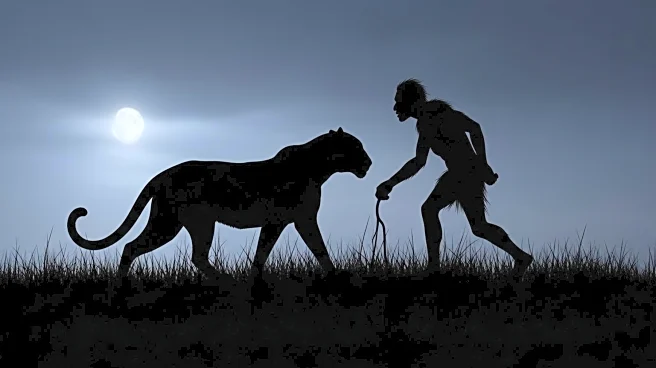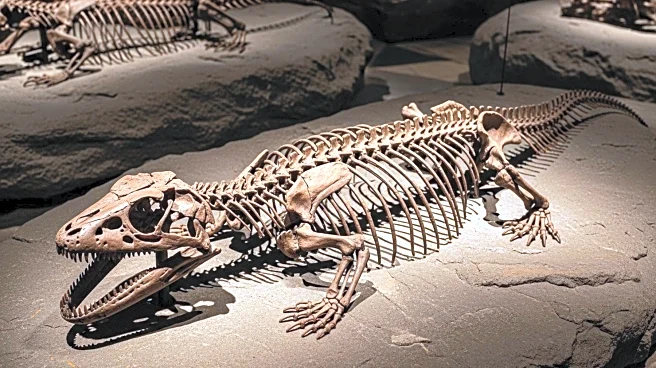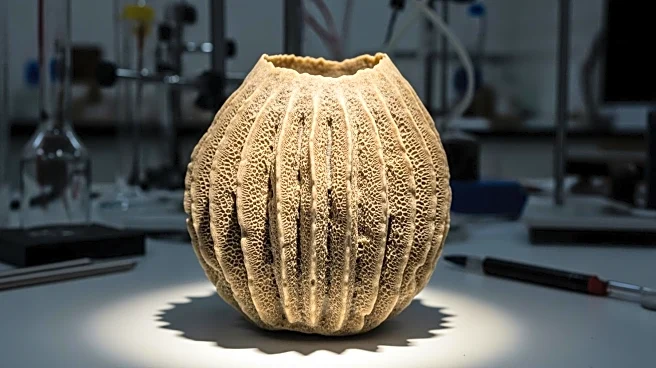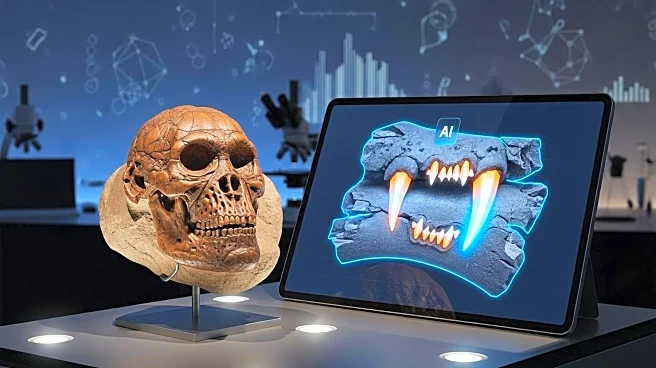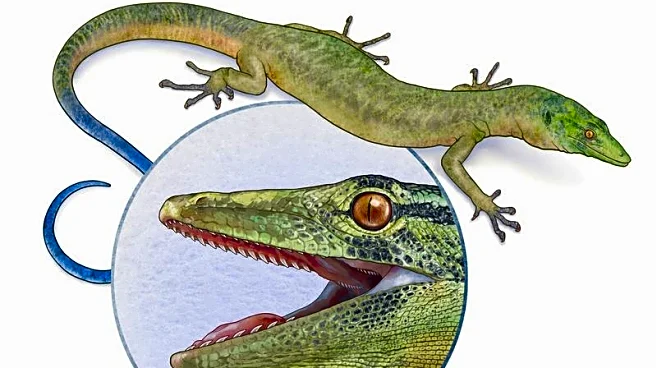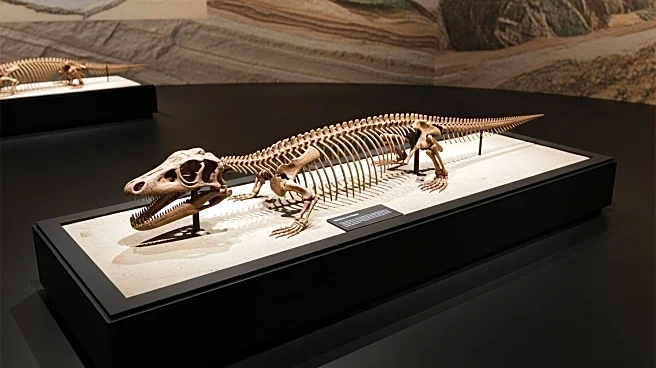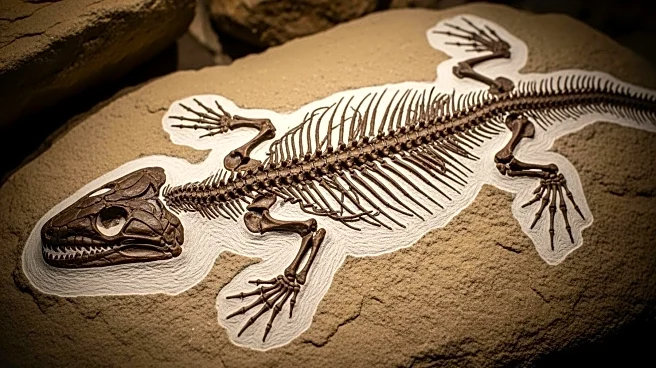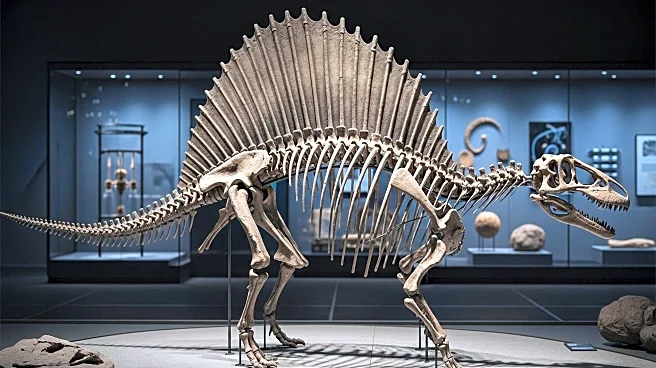What is the story about?
What's Happening?
A new study using artificial intelligence (AI) analysis tools has revealed that leopards likely hunted and feasted on Homo habilis, one of the earliest members of the Homo genus, nearly 2 million years ago in East Africa. Researchers analyzed two H. habilis specimens, identifying carnivore tooth marks on the jawbones that had not been documented before. Using computer vision, the team trained deep learning models to identify bone markings produced by modern carnivores, achieving over 90% accuracy in identifying leopards as the predators. The study provides unprecedented insight into the predation events involving ancient human ancestors.
Why It's Important?
The use of AI in paleontological research offers new opportunities to understand the interactions between ancient human ancestors and large carnivores. The study provides valuable insights into the challenges faced by early humans, highlighting the role of predation in shaping human evolution. By accurately identifying predator species, researchers can better understand the ecological dynamics of prehistoric environments and the survival strategies of early humans. The findings also demonstrate the potential of AI tools in advancing archaeological research and uncovering new information about human history.
AI Generated Content
Do you find this article useful?
